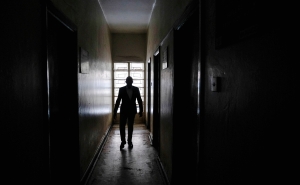Study Finds Hospitals’ Cash Prices for Uninsured Often Lower Than Insurer-Negotiated Prices
Separate study finds trustee compensation at nonprofit hospitals associated with lower charitable care

Two new studies led by researchers at the Johns Hopkins Bloomberg School of Public Health shed light on current U.S. hospital practices.
In one, the researchers found that the prices hospitals negotiate with commercial health insurance companies that get passed along to insured patients frequently exceed the cash prices hospitals unilaterally set for uninsured patients. In the other study, the researchers found an association between greater payment of trustees at U.S. non-profit hospitals and less provision of charitable care.
Both studies were published online April 3 in Health Affairs.
In the hospital pricing study, the researchers analyzed prices for 70 common “shoppable” services disclosed by 2,379 U.S. hospitals as of September 2022 under the new Hospital Price Transparency Rule that went into effect in 2021. The Centers for Medicare & Medicaid Services defines routine services for which patients can compare prices in advance as “shoppable.” The rule, intended to encourage lower prices through competition, requires all U.S. hospitals to post publicly their cash prices—the prices paid by uninsured patients—as well as prices hospitals have negotiated with commercial insurers for covered services.
For their analysis, the researchers used data from Turquoise Health, a data service company that collects hospital pricing information. On average across the 70 services, for nearly half of these services—47 percent—the cash prices were lower than or the same as the median insurance-paid prices for the same procedure in the same hospital and service setting. “Evaluation and management services” and “medicine and surgery” were the service categories that were most likely to have lower cash prices. The analysis also showed that nonprofit and government hospitals—which tend to serve a greater proportion of uninsured patients—were more likely to offer lower cash prices than insurer prices.
The findings suggest that in settings where market forces are more prevalent—in hospitals with more uninsured patients paying cash prices, for example—competition may be driving cash prices lower.
“Some insurance companies, by not negotiating lower prices with hospitals, ultimately shift costs to patients and employers through higher premiums and higher out-of-pocket payments,” says study senior author Ge Bai, PhD, a professor in the Bloomberg School’s Department of Health Policy and Management, and a professor of accounting at the Johns Hopkins Carey Business School.
Bai suggests that self-insured employers should consider using hospitals’ cash prices as references in price negotiations—or even contracting directly with low cash-price providers.
She notes, however, that at the time of the study, nearly half of the general acute care hospitals required to implement the Hospital Price Transparency Rule still had not posted most of their prices for mandated shoppable procedures. So, future data might yield different results.
“Tighter enforcement may be needed to realize this Rule’s potential to lower prices,” she says.
In a second hospital-related study, thought to be the first of its kind, Bai and colleagues examined compensation for the trustees who oversee nonprofit hospitals. These hospitals enjoy major tax benefits in exchange for delivering charitable care to low-income uninsured and underinsured patients and providing other community benefits. The trustees of these institutions—often wealthy philanthropists—traditionally have been expected to serve without compensation, in keeping with these hospitals’ charitable missions.
The researchers, using Internal Revenue Service data for 2019, found that 37.3 percent of the 2,058 nonprofit hospitals in the U.S. compensated their trustees. These trustee-compensating hospitals, compared to other nonprofit hospitals that did not compensate their trustees, delivered less charitable care as a proportion of their overall expenses: a 1.6 percent charity-care-to-expense ratio compared to 2.2 percent for nonprofits with uncompensated trustees. The researchers calculated that a $10,000 increase in average annual trustee compensation was associated with between $66,000 and $77,000 less charity care annually.
“These findings suggest that some nonprofit hospital boards are more mission-driven than money-driven, and that difference is reflected in their provision of charity care,” Bai says.
“The Relationships Among Cash Prices, Negotiated Rates, and Chargemaster Prices for Shoppable Hospital Services” was co-authored by Yang Wang, Mark Katz Meiselbach, John Cox, Gerard Anderson, and Ge Bai. Support for the work was provided by Arnold Ventures and PatientRightsAdvocate.org.
“Trustee Compensation and Charity Care Provision in US Nonprofit Hospitals” was co-authored by Ge Bai, Sebahattin Demirkan, Hossein Zare, and Gerard Anderson. Support for the work was provided by Episcopal Health Foundation, the Commonwealth Fund, Arnold Ventures, and PatientRightsAdvocate.org.
# # #
Media contacts: Caitlin Hoffman choffman@jhu.edu and Kristine Henry khenry39@jhu.edu.




